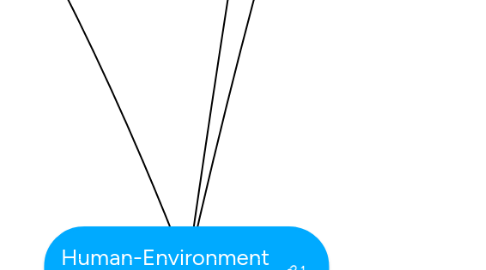
1. Virus/Disease
1.1. Pat/Austin/Andrew/Nakhia
1.2. There are many ways that diseases and viruses from the environment can affect us everyday
1.3. Environments can cause viruses by creating a habitat for the mosquito which can spread viruses and diseases
1.4. Contaminated water
1.5. Varmints
1.6. Rabies
1.7. Mosquitoes
1.8. parasites
1.8.1. Ticks
1.8.1.1. Wood tick
1.8.1.2. deer tick
1.8.1.3. lonestar tick
1.8.2. leeches
1.8.2.1. t-rex leech
1.8.2.2. marine leeches
1.8.2.3. freshwater leeches
1.8.3. lice
1.8.4. fleas
1.8.5. worms
1.8.5.1. tape worms
1.8.5.2. ring worm
1.8.5.3. heart worm
1.8.5.4. flukes
1.8.6. amoebeas
1.8.7. Maggots
2. food production
2.1. Humans consume the food
2.2. Pigs
2.2.1. Let pigs grow up
2.2.1.1. Farrow-to-finish
2.2.1.1.1. Slaughter pig
2.3. Fish
2.3.1. Fish lays eggs
2.3.1.1. Male fish fertilizes eggs
2.3.1.1.1. fish are hatched
3. Human impact on environment
4. Things that impact the air
4.1. The Sun
4.1.1. A star
4.1.1.1. Sunspots
4.1.1.1.1. Solar Flares
4.1.1.2. Global
4.1.1.3. A Source of Energy
4.1.1.3.1. Gives Off Electromagnetic Radiation
4.1.1.4. A Source of Heat and Light
4.1.1.4.1. Too Much Heat
4.2. vehicles
4.2.1. carbon monoxide
4.2.2. sulfur dioxide
4.2.3. carbon dioxide
4.3. power plants
4.3.1. nuclear
4.3.2. fossil
4.3.3. waste burners
4.3.4. biomass
4.4. chemicals
4.4.1. Carbon Monoxide
4.4.2. lead
4.4.3. nitrogen dioxide
4.4.3.1. Ozone
4.4.3.1.1. Human Illness
4.4.4. acid
4.5. smog
4.5.1. Sunlight
4.5.2. Air Pollutants
4.5.2.1. Ozone
4.5.2.1.1. Human Illness
4.6. Pollen/mold
4.6.1. trees
4.6.1.1. Photosynthesis
4.6.1.1.1. Makes Oxygen
4.6.1.1.2. Takes in CO2
4.6.2. houses
4.6.2.1. Hosts mold
4.6.3. sewage
4.6.3.1. Holds Harmful Substances
4.6.3.1.1. Gives off CO2
4.6.4. trash
4.7. The good things
4.7.1. plants
4.7.1.1. Trees
4.7.1.1.1. redwood trees
4.7.1.1.2. maple trees
4.7.1.1.3. coconut trees
4.7.1.1.4. pine trees
4.7.1.1.5. birch tree
4.7.1.1.6. fire dragon tree
4.7.1.1.7. Oak trees
4.7.1.1.8. Dark oak trees
4.7.1.2. algae
4.7.1.2.1. produces oxygen
4.7.1.2.2. Gets rid of Carbon Dioxide
4.7.1.3. flowers
4.7.1.3.1. poppys
4.7.1.3.2. daisys
4.7.1.4. grass
4.7.1.4.1. Prairie grass
4.7.1.4.2. pampas grass
4.7.1.4.3. Scutch grass
4.7.1.4.4. Fescues grass
4.7.1.4.5. Wheat
4.7.1.4.6. Silvergrass
4.7.1.4.7. barley
4.7.1.4.8. fountain grass
4.7.1.5. Edible Plants
4.7.1.5.1. Food for Human Consumption
5. Things that impact the land
5.1. Deforesting
5.1.1. Clearing land for civilization
5.1.2. need of wood
5.1.2.1. fires
5.1.2.1.1. Populations move
5.1.2.2. furniture
5.1.2.3. paper
5.2. Farming
5.2.1. Clearing land
5.2.1.1. Plowing
5.2.1.2. Pastures
5.2.2. Changing ecosystms
5.2.2.1. Irrigation
5.2.2.2. killing decomposers
5.2.3. over using natural plants
5.2.3.1. food
5.2.4. Relocating animals
5.2.4.1. Domestication
5.2.4.2. Killing predators
5.3. Urbanization
5.3.1. Clearing land
5.3.1.1. preventing fires
5.3.1.2. making areas for homes
5.3.1.3. Grazing
5.3.1.4. building roads
5.3.2. liquid waste
5.3.2.1. Oil
5.3.2.2. contaminated water
5.3.2.3. human waste
5.3.2.4. pesticide
5.3.2.5. weed killer
5.3.2.6. sewage
5.4. Changing ecosystems
5.4.1. GMO
5.4.2. Hunting
5.4.3. Waste
6. Things that impact the water
6.1. Climate Change
6.1.1. Temperature of oceans
6.2. Fishing
6.2.1. Coral Reefs
6.2.2. Fish species evolve
6.2.3. Invasive species
6.3. Industrial runoff
6.3.1. Pesticide runoff
6.3.2. Manure run off
6.3.3. Sewage dumping
6.4. Oil Spills
6.4.1. oil dumping
6.4.2. ship wrecks
6.4.3. enginering failure
6.5. Plastic waste
6.5.1. plastic bags
6.5.2. bottles
